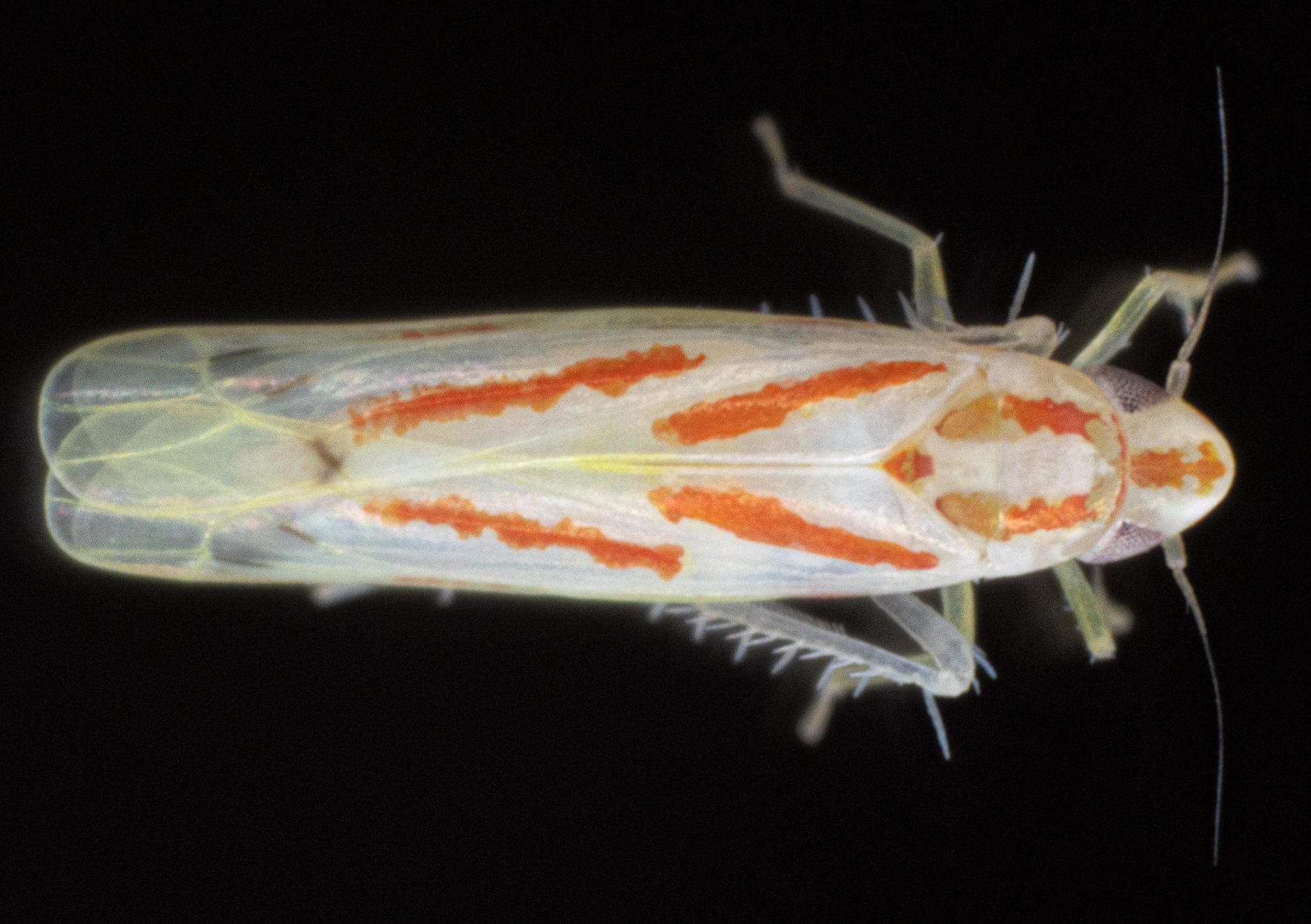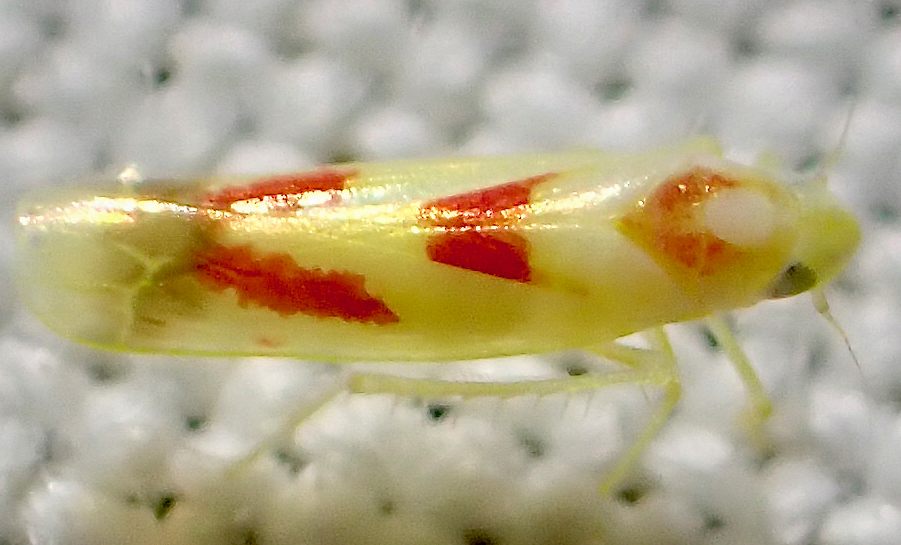Description: A pale white or yellowish species, with two pairs of oblique yellow to bright red lines across the wings, a median stripe on the vertex, and two stripes on the pronotum that arise from the vertex. There are black markings at the cross nervures of the wing apices. The female pregenital sternite is one-half longer than the preceding, with the posterior margin strongly produced from lateral angles to a broad median, convex tooth. Male subgenital plates drastically taper toward the apices, appearing pinched on the lateral margins. Adults are 2.75-3.0 mm long. (Ball & DeLong, 1925)
There are three described varieties of this species: kansiensis (which has a slightly different shape to the pregenital sternite), lavata (which is entirely pale, creamy, or with slight smoky indications near the cross-veins), and rubricata (which has an entirely red scutellum and broader red markings and smoky band than usual).
For additional images of this species, see: BG. |

 »
»


 »
»
